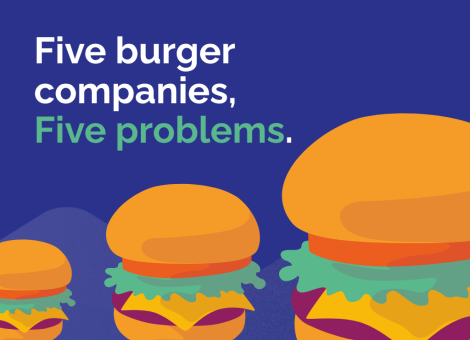4 ways gas price analysis can help fuel pricing strategists improve
Mastering the fuel pricing strategy is more than just optimizing your pricing process. A successful location often has several, more powerful volume magnets than price: brand, hours of operation, fresh food offerings, even which corner of the intersection a site is located on. Pricing, then, is merely sharpening the knife on a sites’ performance. But pricing teams have multitudes of data at their disposal — how can pricing strategists better incorporate this data into their gas price analysis?
Improving your strategic and tactical decisions based on gas price analysis depends on gathering more comprehensive data, analyzing that data effectively and establishing a better process. Let’s dive into some key methodology changes that you can employ today to drive more effective results.
4 Ways Fuel Pricing Strategists Can Improve Their Methods
1. Establish a baseline of performance metrics
Commonly, pricing strategists analyze volume and margin metrics on an XY axis — but this isn’t telling the whole story. To improve volume and margin performance, you have to analyze the cause and effect of that performance. Why are some sites lagging? Is there new competition across the street? Is their new operations team ineffective? Have there been changes in traffic patterns?
Make sure you’re establishing and tracking the right metrics to understand where your performance is improving and where it is not. By leveraging all of the data at your disposal, you can establish a delta to the competition and better understand why some stores are winners and some are losers. When you know your current standing in the market as well as your vision for the future, you can become more intentional about your strategy for getting there.
2. Keep an eye on the competition
Know your competition: What makes them great? What makes them weak? In any micro-market, offers like fresh food, clean bathrooms or car washes create destination stops out of your sites or your competition’s sites. If the competition is outpacing you, it’s critical that you be intentional in your strategy.
Get out in the field to truly get a feel for the competition and maintain a database on your main markers to measure your performance more effectively. Keep tabs on the number of parking spaces the competition has, their location, their hours of operation and their brand. Maybe even take photos of different sites. Understanding where your competitors have an advantage — and where you’re leading in the market — will help you optimize your strategy more effectively.
3. Involve and be involved with your operations team
Pricing strategists can’t always understand the ins and outs of their micro-market from inside their offices. Your operations team needs to be the eyes and ears for the pricing manager. Many pricing teams will ask for competitor survey data for pricing or to execute price changes, but it’s important to engage at a deeper level with operations.
Ask your operations team: Where have there been more operations and manager involvement in your stores? Which of your stores are doing mystery shopper surveys? Which of your stores have new competition? Is a construction team digging up dirt across the street to install a shiny new offer? The operations team will be the one closest to these micro-market dynamics, so work with them to gain a more holistic view of your market.
4. Run regular, quarterly, cross-functional reviews
Bring in your pricing, operations, merchandising, logistics and finance teams for strategic quarterly reviews. Look at the previous quarter’s performance, the strategy you had in place and any changes in performance since then. The goal of these reviews is two-fold: What’s the cause and effect of any performance change at a location? Did my strategy truly have an effect or was it larger micro-market event that drove that change? Drag out any potential reasons not related to price and optimize your strategy accordingly.
When you make an intentional strategy change, be transparent with all other cross-functional teams. Everyone should understand the reasons behind the change, the limits of the strategy and the fail-safe if it happens to go wrong. Remember: it’s okay if the change fails. Realizing what doesn’t work is just as important as realizing what does work in executing an effective gas price analysis strategy.
Intentional, Data-Driven Decisions for Fuel Pricing Success
Ultimately, pricing strategy is only one factor in boosting the performance of your sites; optimizing all seven elements of fuel retail success is the key to becoming a leading retailer in your market. By maintaining a high-level view of your market and understanding the performance changes driven by a complete gas price analysis strategy, you can work with your cross-functional teams to be more intentional and informed in your decisions.
Read more articles about:
Fuel pricingSubscribe and get the latest updates
You may unsubscribe from our mailing list at any time. To understand how and why we process your data, please see our Privacy & Cookies Policy
Related posts
Location intelligence
Five burger companies, five problems
These burger brands had challenges from international growth to understanding franchise locations cannibalization,...

Location intelligence
Market Optimizer: Demo video
Market Optimizer allows users to strategically grow their network in existing markets while balancing revenue...

